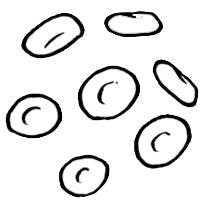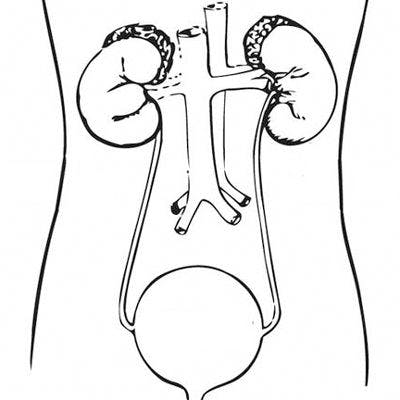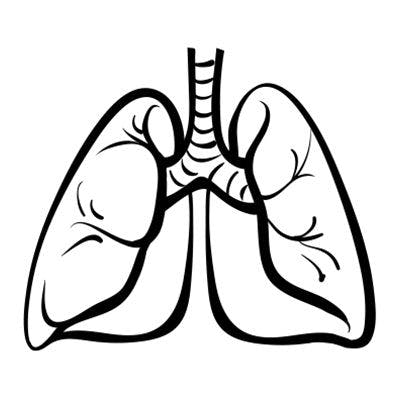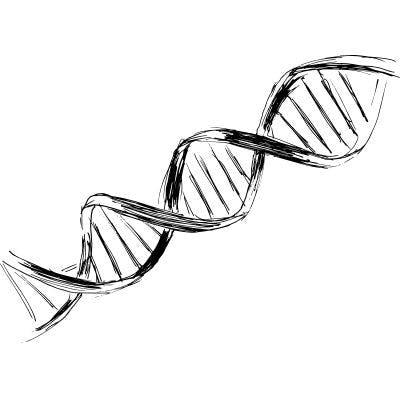Benefit of PARP Inhibitors May Extend to Certain Tumors With IDH Mutations
Patients harboring IDH1/2 muta­tions may receive benefit by the use of PARP inhibitors, with investigators initi­ating clinical trials in patients across multiple different tumor types to determine the efficacy of this strategy.

Patients harboringIDH1/2muta­tions may receive benefit by the use of PARP inhibitors, with investigators initi­ating clinical trials in patients across multiple different tumor types to determine the efficacy of this strategy.
Encouraging preclinical data have indicated that mutations inIDH1/2produce homologous recombination (HR) defects causing tumor cells to be sensitized to PARP inhibition.1
“The correct way [to approach these malig­nancies] is not to think that all mutations are drivers that should be inhibited, but rather that there are mutations that are creating vulnerabil­ities that can be exploited,” said Louis Weiner, MD, who moderated the American Association for Cancer Research (AACR) Annual Meeting in 2017, where the findings from 2 studies of PARP inhibitors inIDH-mutated cancers were presented.2
Data from Parker L. Sulkowski and colleagues were presented by study coauthor, Ranjit Bindra, MD, PhD, and showed thatIDH1/2mutations induce an HR defect in tumor cells. Cells that carry HR defects cannot perform the DNA repair necessary to reverse the damage that results from radiation and chemotherapy; consequently, these cells enter apoptosis, a pro­cess of programmed cell death that eliminates dysfunctional cells.1-3
The HR deficiency thatIDH1/2mutations confer renders these cells sensitive to PARP inhibition, which further obstructs DNA repair. When used to treat tumors with HR defects, PARP inhibitors such as olaparib (Lynparza) lower tumor cells’ ability to repair DNA and cause them to die in a process known as syn­thetic lethality. This mechanism of action causes PARP inhibition to be an effective approach in tumors with these defects.1-3
Based on these findings, a single-arm phase II trial (NCT03212274) will evaluate olapa­rib monotherapy in up to 145 patients withIDH1/2alterations.
“By giving olaparib, we’re capitalizing on the fact that tumors withIDHmutations don’t repair DNA properly,” Roman Groisberg, MD, principal investigator of the study’s 2 sites at the Rutgers Cancer Institute of New Jersey and the Robert Wood Johnson University Hospital, both of New Brunswick, New Jersey, said in an interview withTargeted Therapies in Oncology.
“We’re giving these cells a double whammy, prompting them to go into cell death,” added Groisberg, who is also a medical oncologist at the Rutgers Cancer Institute.
Preclinical Data
Research by Sulkowski and colleagues not only established thatIDH1/2-mutated cells have reduced DNA repair capability but also showed that 2-hydroxyglutarate (2-HG) may be the driving force of this cellular weakness.IDHmutations are neomorphic, meaning that the alterations induce a change in the traditional function of the IDH protein. Whereas normal, unmutated IDH proteins produce energy, mutat­ed proteins generate the 2-HG oncometabolite, which amplifies HR deficiency, and consequently, sensitivity to PARP inhibitors.1-3
“Bindra’s lab found thatIDHmutations lead to decreased HR repair, which is the same thing as saying [IDH-mutated disease] has a ‘BRCAness’ phenotype. Tumors with these HR defects also respond to PARP inhibitors, even if they don’t have aBRCAmutation,” Groisberg said.
This BRCAness phenotype causesIDH-altered tumor cells to resemble breast and ovarian cancer cells that harbor mutations inBRCA1/2, according to Bindra, an expert in therapeutic radiology at the Smilow Cancer Hospital Care Center at Yale New Haven in Connecticut. In breast and ovarian cancers,BRCA1/2mutations weaken cells’ DNA-repair ability, similarly ren­dering these malignancies susceptible to PARP inhibition.1-3Data, Groisberg said, have shown that olaparib works particularly well in patients withBRCA-mutated breast and ovarian cancers.
Findings from Sulkowski et al’s study suggested that olaparib’s efficacy extends to disease that harbors anIDHalteration.IDH-mutated human glioma cells, bone marrow cultures from patients withIDH-mutated acute myeloid leukemia (AML), and xenograft models implanted withIDH-mutated human tumor cells were each sen­sitive to PARP inhibition. Investigators treated the mice with either olaparib monotherapy at 50 mg/kg daily or vehicle control and noted an 8-fold difference in tumor growth delay that favored olaparib over the control (analysis of variance,P =.001). The superiority of sin­gle-agent olaparib over vehicle control was seen with the human glioma cells and bone marrow cultures, investigators said.1
Moreover, data from Sulkowski et al’s study also indicated that IDH inhibitors may not be the best therapeutic intervention for tumors withIDHdriver mutations. Investigators tested 3 small molecule IDH inhibitors inIDH-altered colon and cervical cancer cells and found that the precision therapies blocked production of 2-HG, consequently reducing cell sensitivity to PARP inhibition. The HR defect and consequent vulnerability to PARP inhibition thatIDH 1/2mutations engender creates a cellular weakness that can and should be targeted in the treatment ofIDH-mutated tumors, authors concluded.1
They added that the findings should motivate further clinical study of the agents inIDH1- mutated gliomas specifically, as well as other cancers withIDH1/2mutations.IDH1/2muta­tions occur in approximately 60%, 20%, and 10% of chondrosarcomas, intrahepatic cholangiocar­cinomas, and AMLs, respectively.4Moreover,IDHmutations are known to present in a vari­ety of diseases, including melanoma, colon, and lung cancers, according to Simon Khagi, MD, principal investigator of the phase II study’s site at UNC Lineberger Comprehensive Cancer Center in Chapel Hill, North Carolina, who was interviewed byTargeted Therapies in Oncology.
In the phase II study of olaparib in patients withIDH1/2-mutated glioma, cholangiocar­cinoma, and other solid tumors, investigators will use mass spectrometry at baseline and at various points throughout the trial to assess the 2-HG concentration in patients’ blood. They will also examine the levels of 2-HG present in tumor biopsies before treatment initiation and thereafter. In both cases, investigators will assess whether 2-HG concentration correlates with response to olaparib.
The primary end point is overall response rate in the 3 cohorts of glioma, cholangiocarcinoma, and other solid malignant tumors. Secondary end points include progression-free survival, overall survival, durations of response, and adverse events (FIGURE). Patients will receive olaparib twice a day on days 1 through 28. Treatment cycles will repeat every 28 days until disease progression or unacceptable toxicity.
Olaparib is currently indicated as a main­tenance therapy for adults with deleterious or suspected deleterious somatic or germlineBRCA-mutated (gBRCAm) advanced epithelial ovarian, fallopian tube, or primary perito­neal cancer who are in complete or partial response (CR; PR) to first-line platinum-based chemotherapy. It is also approved for the treat­ment of patients with deleterious or suspected deleterious gBRCAm, HER2-negative metastat­ic breast cancer who have been treated with chemotherapy either in the neoadjuvant, adju­vant, or metastatic setting.5
The agent has additionally been cleared for use in gBRCAm metastatic pancreatic adenocarcinoma, and is presently under priority review in combination with bevaci­zumab (Avastin) as a potential front-line main­tenance treatment for women with advanced ovarian cancer who are in CR or PR to first-line platinum-based chemotherapy with bevacizumab.5,6
Gliomas
Gliomas, cholangiocarcinomas, and solid tumors such as chondrosarcomas are rare diseases, and the need for new treatment options is great, Groisberg said. Gliomas are central nervous system tumors that develop in approximately 6.6 per 100,000 individuals each year.7Cholangiocarcinomas affect a 8000 people annually in the United States; chondrosarcomas, 1 person in 1 million.8,9
Because patients with high-grade gliomas (grade III to grade IV) are not candidates for surgery, radiation and temozolomide (Temo­dar) chemotherapy are the standard of care, Groisberg explained.
“In adults, gliomas are almost always univer­sally high-grade and fatal. There is no curative treatment for these patients and they all will progress,” Groisberg said. “These patients are desperate for novel treatments, which have not come in many, many years,” he added.
In high- and low-grade gliomas (grade I to grade II) and secondary glioblastomas,IDHmutations, which occur in >80% of low-grade gliomas and secondary glioblastomas, are biomarkers for longer survival and greater sensitivity to radiation and/or chemotherapy.4 AlthoughIDHalterations can guide treatment in these patient populations, Khagi said there is nevertheless a “significant need for improve­ment in the management of all diseases withIDHmutations.”
“Even thoughIDHis indicative of better over­all survival in gliomas, high-grade or low-grade, the majority of these patients are still dying of their disease. They may just be dying a little bit later than someone without anIDHmutation,” said Khagi, who directs UNC’s neuro-oncology and brain metastases programs.
Cholangiocarcinomas and Chondrosarcomas
Prognoses for cholangiocarcinomas are not much better than those for high-grade gliomas, Groisberg said. Chemotherapy will elicit an initial response in patients with cholangio­carcinomas, but eventually stops working, at which point few treatment options remain. A minority of cholangiocarcinomas harbor fibro­blast growth factor receptor fusions that can be addressed with targeted therapy, but this constitutes a small percentage of the patient population, Groisberg added.
“The rest of them don’t have much by way of therapy,” he said. “Other [approaches] like immunotherapy have not been successful in cholangiocarcinomas, so there is a huge amount of unmet need.”
Treatment options are especially dismal for those with chondrosarcomas, a disease for which there are “no effective systemic ther­apies,” Groisberg said. “No chemotherapies work for chondrosarcomas; once they progress beyond a surgeon’s ability to cut out the disease, there is effectively no hope for these patients at all,” he added.
Investigators of the phase II study will probe for benefit with olaparib monotherapy, but when it comes to advancing the treatment paradigm for each of these orphan diseases, a single-agent approach might not be the only anti-PARP intervention that warrants clinical exploration, Khagi said.
“We need better ways of targetingIDHmutations in glioma, cholangiocarcinomas, and chondrosarcomas, and it may not just be single-agent PARP inhibition; it may be a com­bination of PARP inhibition with chemotherapy to exploit multiple pathways of vulnerability,” Khagi said.
Of note, research from Lu et al, also present­ed at the AACR Annual Meeting 2017, showed that targeting the PARP-affiliated DNA repair pathway significantly sensitizedIDH1-mutat­ed glioma cells to temozolomide. The finding supports the notion that PARP inhibition coupled with concurrent temozolomide-based chemotherapy represents a potential treatment strategy for gliomas, pending further investigation.10
The phase II study of olaparib monotherapy is currently recruiting across 33 sites nation­wide and is slated to conclude in July 2020.
References
- Sulkowski PL, Corso CD, Robinson ND, et al. 2-hydroxyglutarate produced by neomorphic IDH mutations suppresses homologous recombination and induces PARP inhibitor sensitivity.Sci Transl Med. 2017;9(375):eeaal2463. doi: 10.1126/scitranslmed.aal2463.
- Ravoori S. AACR Annual Meeting 2017: challenging the dogma of treatingIDH-mutant cancers with IDH inhibitors. American Association for Cancer Research website.https://bit.ly/2Th5uIv. Published April 11, 2017. Accessed January 14, 2019.
- NCI staff. PARP inhibitors may be effective in brain, other cancers with IDH mutations. National Cancer Institute website. bit.ly/2IaxHeZ. Published April 24, 2017. Accessed January 14, 2020.
- Molenaar RJ, Maciejewski JP, Wilmink JW, van Noorden CJF. Wild-type and mutated IDH1/2 enzymes and therapy responses.Oncogene. 2018;37(15): 1949-1960. doi: 10.1038/s41388-017-0077-z.
- Lynparza [prescribing information]. Kenilworth, NJ: AstraZeneca; 2014. bit.ly/2TgB9K6. Accessed September 17, 2020.
- Lynparza (olaparib) regulatory submission granted priority review in US for 1st-line maintenance treatment with bevacizumab in advanced ovarian cancer [news release]: Kenilworth, NJ. AstraZeneca and Merck & Co, Inc. Published January 13, 2020. bit.ly/2vmrxFF. Accessed January 17, 2020.
- Leveille E, Taylor J. Glioma. National Organization for Rare Disorders. bit.ly/2PqzwIE. Published 2019. Accessed January 17, 2020.
- The American Cancer Society medical and editorial content team. Key statistics for bile duct cancer. The American Cancer Society website. bit.ly/2wIgVB8. Updated July 3, 2018. Accessed January 17, 2019.
- Boehme KA, Schleicher SB, Traub F, Rolauffs B. Chondrosarcoma: a rare misfortune in aging human cartilage? The role of stem and progenitor cells in proliferation, malignant degeneration and therapeutic resistance.Int J Mol Sci. 2018; 19(1). doi: 10.3390/ijms19010311.
- Lu Y, Kwintkiewicz J, Liu Y, et al. Chemosensitivity of IDH1-mutated gliomas due to an impairment in PARP1-mediated DNA repair.Cancer Res. 2017;77(7):1709-1718. doi: 10.1158/0008-5472.CAN-16-2773.















